Space Cowboys’ SpellBook, designed by Phil Walker-Harding with art by Cyrille Bertin, is one of the prettiest board games I’ve ever played, with its fantasy action and mechanics elevated by gorgeous, colourful artwork, and a real sense of quality. Even before I dove into the game itself, it made an immediate impression – which is always a good thing in the board game scene.
You want an adventure that plays well, entertains folks, and also looks good while doing it. Board games are an incredibly visual and tactile form of entertainment, with so many working parts. But with a strong sense of style and sweeping fantasy imagery, SpellBook is quick to sweep you up in its magic.
The premise here is fairly simple. You are a sorcerer in possession of a magical grimoire seeking to learn spells, while also taking care of a Familiar creature (cat, dragon, platypus, owl, and others included on bonus Familiar discs). You can accomplish this task in solo or multiplayer modes, with the ultimate goal of each SpellBook match being to learn every spell in your grimoire, or completely feed your Familiar with spell tokens.
How to setup and play SpellBook
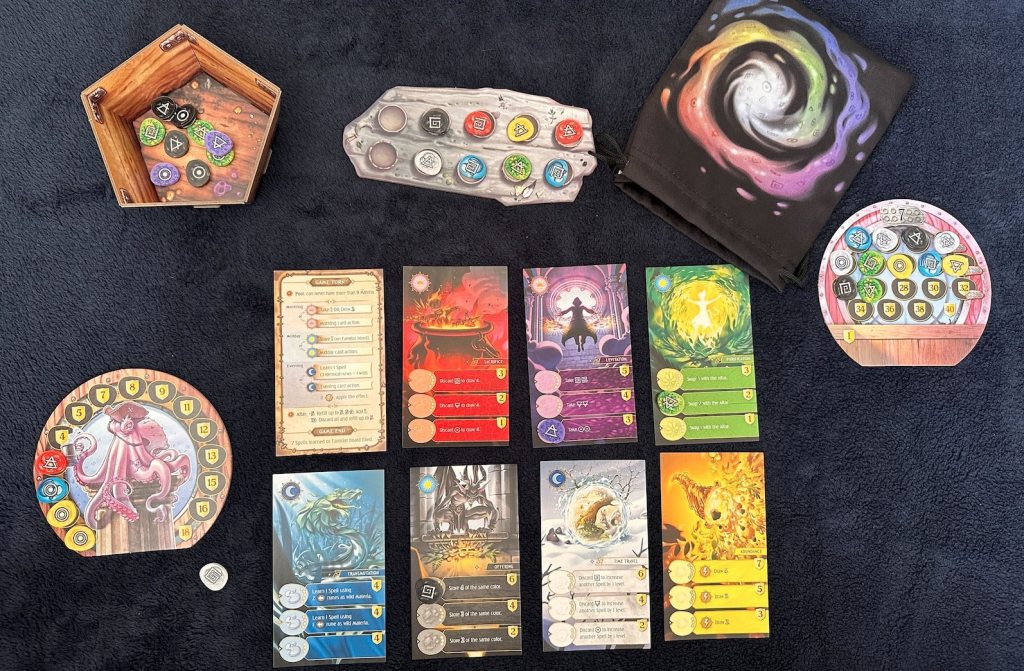
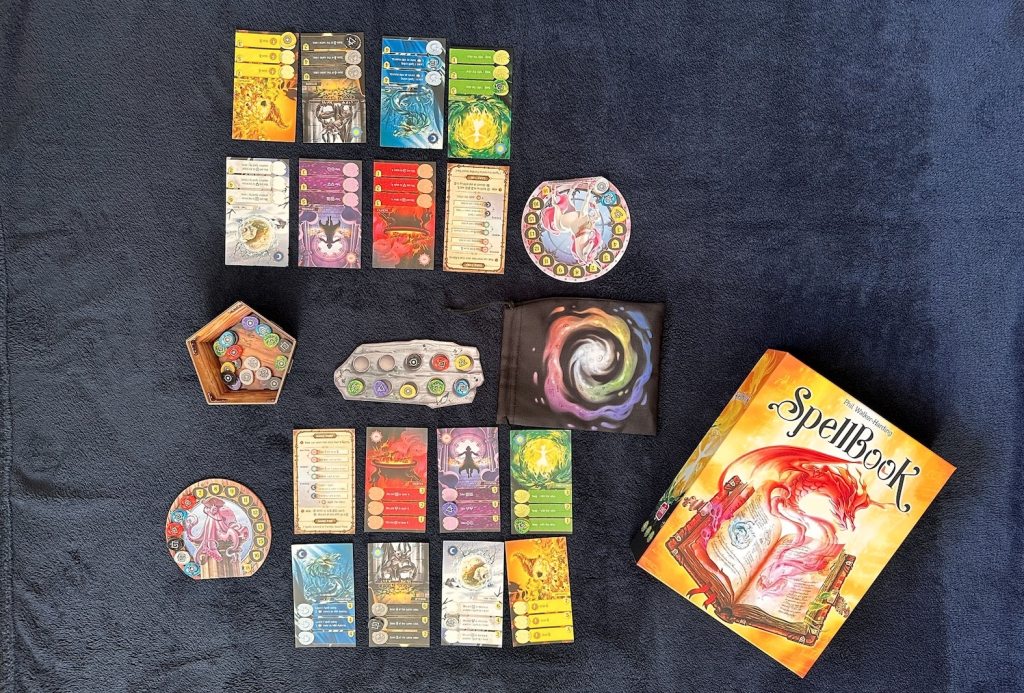
SpellBook can be played in two variants: solo, or multiplayer – although it feels more suited to a competitive multiplayer format. In both variants, each player will have a grimoire of seven spells to learn, and a Familiar companion, as well as access to a central Altar of spell tokens, and a discard pile.
For the solo variant, players will be competing against an ‘AI’ which gathers points automatically every turn, while those in the multiplayer variant will be competing alongside real human beings, in a race to gather the most points.
Read: The best cooperative board games for two players
Setup here is very simple, and easily explained by the rule book (or via helpful online videos). While each card contains complex components (token costs, point scores, effects) they’re easily understood – and each player will have a linear instruction card to follow in gameplay.
Like other games of its kind, it fits well in the ‘easy to learn, hard to master’ bucket, with opening simplicity and approachability, and much deeper strategy for experienced players. With multiple sets of different spells to learn, there’s also a fair layer of replayability here, and rounds are snappy enough to make SpellBook perfect for bringing out at group game nights.
Once you have your grimoire and Familiar set up, your goal on your turn is to gather coloured spell tokens to learn particular spells as you progress through three game phases (Morning, Midday and Evening). Three-to-five coloured tokens are required to learn each spell, and spending more tokens will unlock better abilities, so you can either pursue higher quality spells over a longer period, take a speedier route, or spend time feeding your Familiar.
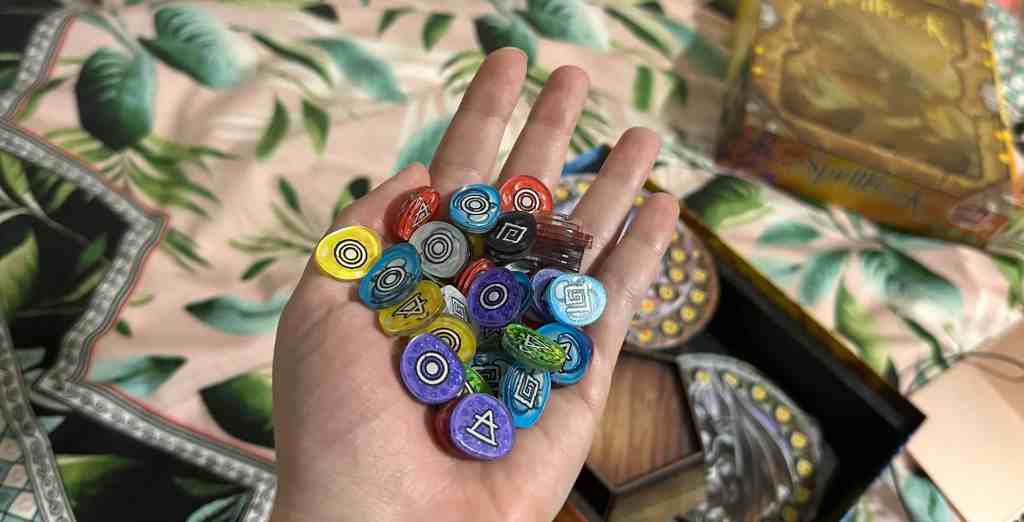
The game has multiple end-states – a Familiar is fully fed, or a player has learned all seven of their spells – but to win, you must have the most points. There’s plenty of opportunity to deploy strategy in your goals, think about your next moves, and exploit your spells to your advantage.
You can end the game and still lose, so it’s best to plot your course carefully.
Strategic wizardry
By nature, SpellBook is a game with slow, building tension. Your opening plays are relatively calm, as the game’s linear phases mean you can’t do much until you earn your first spell. You’ll be analysing your cards, picking which spells to learn and exploit, and charting the most effective course forward.
Once you learn your first spell – something like ‘Levitation’ perhaps, which increases your capacity to grab spell tokens every round – you’re then able to make more impactful moves, such as gathering more tokens, feeding your Familiar well, or improving your learned abilities.
At the halfway point of gameplay, SpellBook really kicks off, with the sudden ramp in activity and your spell options per round forcing you to make more clever decisions, particularly in a competitive game. Strategy comes into play in a major way here, as you need to learn and master your abilities in order to gather the most tokens, thereby unlocking the most spells, or feeding your Familiar better than your opponent/s.
With so much to keep track of – particularly your opponent’s progress and spell choices – SpellBook can become overwhelming, but that’s part of its charm. As a competitive game, it can feel incredibly rewarding, with each playthrough offering new insight into potential winning strategies for the future.
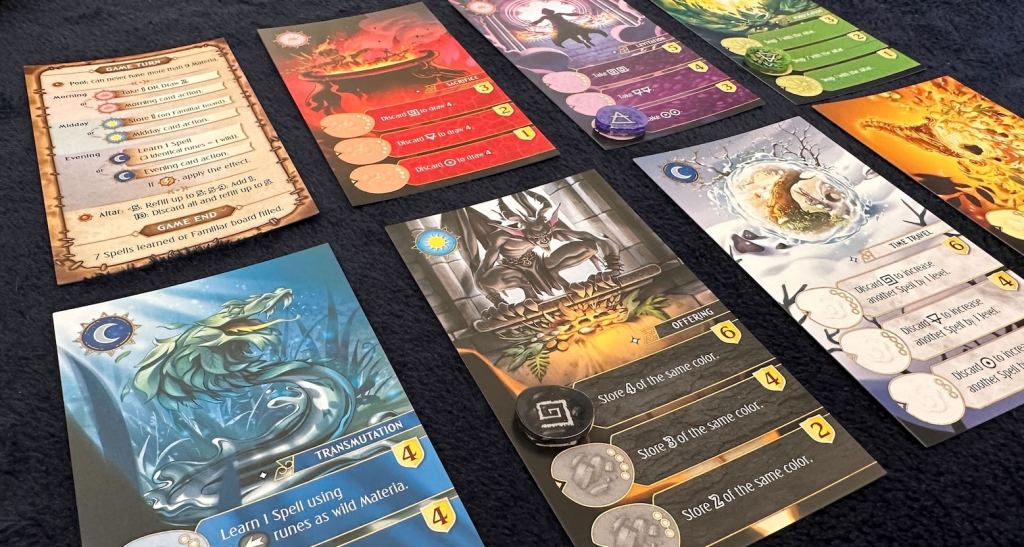
Where this gameplay style is slightly less impactful is in SpellBook‘s solo mode, which feels far less exciting than multiplayer mode – to the point where you might as well avoid it entirely.
SpellBook: Solo vs. multiplayer
As mentioned, SpellBook comes in two modes, and is playable solo or with up to four other players. While you’re facing off with friends, it’s a tense and strategic fight to learn the most spells in the shortest time, while monitoring other players for crafty moves.
In solo mode, you’re playing without any of this tension, as you’re facing off against a slowly advancing track of numbers. In each round, your AI opponent will earn more points, and occasionally initiate a complete wipe of the spell tokens on the altar board. That’s all they do. In addition, they’re also very difficult to defeat – as playing solo means you need to earn more than 40 points by the end of the game, and in a fairly short time frame.
The difference is dramatic. Where SpellBook in multiplayer form is playful and energetic, with each move punctuated by the ‘oohs’ and ‘ahhs’ of making big plays, there’s not a whole lot of satisfaction in solo mode, beyond getting your hands on the games shiny, smooth spell tokens and being quietly pleased with your choices.
It’s great to see a game like SpellBook catering to solo players, but it shines so brightly beyond this mode that it makes solo mode feel like a redundant inclusion. Stick to multiplayer, and you’ll have a blast fighting to be the greatest sorcerer among your friends.
Final verdict
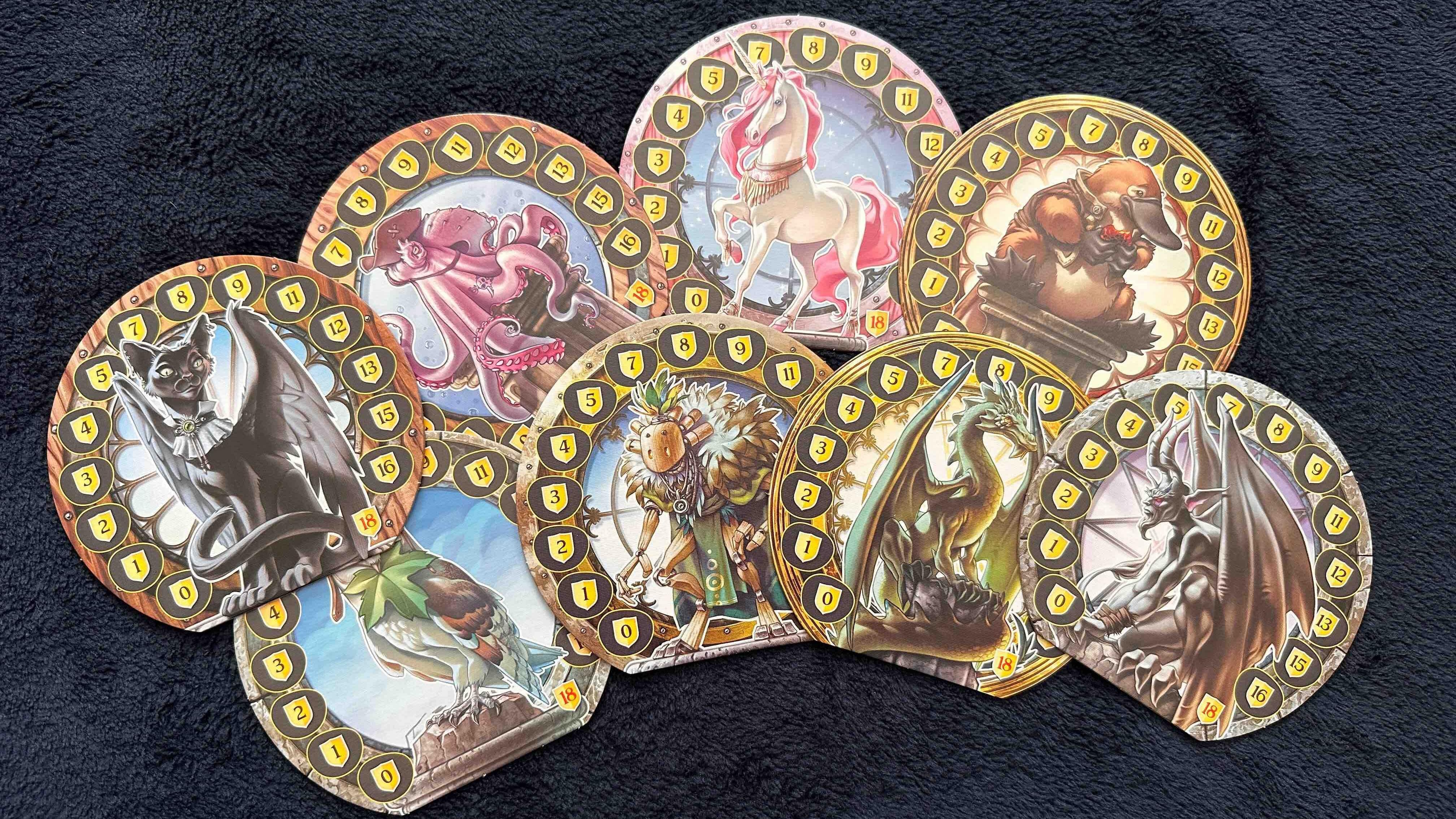
Regardless of a lacklustre solo mode, SpellBook is an enchanting competitive board game, with a neat blend of easy approachability and complex strategy. With high-quality art and both cardboard and plastic pieces, it’s an immensely inviting game, and one with immaculate fantasy theming.
Its gameplay is clever and satisfying, and with plenty of spell variants and mixes of gameplay formats, it’s also very replayable, with potent new strategies (and a slim layer of choice) always providing hope for the next session.
For those looking for a snappy, competitive board game to play with friends, SpellBook offers worthy and compelling gameplay that should inspire passionate battles.
Four stars: ★★★★
SpellBook
Designer: Phil Walker-Harding
Artist: Cyrille Bertin
Publisher: Space Cowboys
Release Year: 2023
You can check out SpellBook on Amazon, or learn more on the Space Cowboys website.
A copy of SpellBook was provided by VR Distribution and Double Jump for the purposes of this review. GamesHub reviews are scored on a five-point scale. GamesHub has affiliate partnerships. These do not influence editorial content. GamesHub may earn a small percentage of commission for products purchased via affiliate links.





